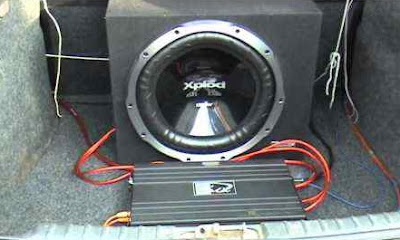

Avoid fumbling with a bass boost early.Įven though you paid for everything, including the bass, not properly adjusting the gain, while using the bass boost can unnecessarily stress out your amplifiers. A gain is designed to match the input on an amplifier with the output of the head unit. Always make sure to set your gain correctly.Ĭorrectly setting your gain is a must to avoid clipping. Look for an amplifier that has 80 – 150% subwoofer rated RMS power. When selecting an amplifier, choose one with a capacity to give your subwoofers the maximum clean watt possible. Here are what experts recommend to avoid clipped audio signals: 1.

This can help you avoid blowing up your subwoofers. Which suggests that simple calculation is not indicative of the amplifier's control over the cone.Īlso being old enough to have only had analogue tape or vinyl sources, cone flap was not considered out of the ordinary.Using tuning tools accurately identifies sound clipping. I once connected a DC coupled amp to a drive unit and tapped the cone and then repeated it after disconnecting the amp. Back emf is the release of inductor energy once the drive has been removed, but as the amplifier is now driving in the opposite direction the maths will be a little more complex, and a factor of 4 might be a long way off. I say common knowledge because some rubbish the whole idea of damping factor.
#Subsonic on amp full#
It's always a good idea to do a lot of research before buying, but some manufacturers don't give the full details these days.Īnd therefore I should remark that the Proprius also has sod-all damping factorīased on common knowledge it is around 4 at 20Hz. Then again, Chris says these are designed using amps with a stiff driving impedance.
#Subsonic on amp driver#
Reflex "loading" allows the driver to resonate (pump) at its resonant frequency and a complete lack of damping will allow large cone excursions, but I would have thought the manufacturer would have taken that into consideration so as not to "bottom out" on its suspension. Slope of filter 6dB/octave.Īgreed, damping factor (or should we call it driving impedance?) isn't much from an output transformer, and as such "sod all" is appropriate wording. Replacing the grilles would remove that annoyance, and not cost anything. However, to get the cross feed a large number of op-amp stages are required to do the subtraction and summing and so the resulting sound might not be as good.Ĭone flap should not damage well made speakers, and if so it would only be of visual annoyance. I beg to differ on that, because some early stereo records have the bassists over to one side or another.Īnyway, as bass is less directional and the "cross feed" circuit doesn't result in phase differences within audibility (which your filter does), then it looks like a better idea. Purists may argue that it makes the lows mono, which isn't a good thing, but we are told that records are cut with mono bass below 300Hz anyway. This cross feeds the bass from around 150Hz and below and cancels the lateral differences from the cartridge where the rumble, we are told, comes from. If a 1Meg valve amp input the parallel combination will be 70k, and the turnover frequency only slightly higher at 22.74Hz.Īt the other extreme of say a 22k input solid state, the parallel combination will be 17k, and the turnover frequency much higher at 93.6Hz.Īnother much more complex way of doing it would be to use the channel subtract and sum method which has been doing the rounds since 1979 (see: ). By how much depends on the input impedance of the amp (or preamp etc). The values give a high pass filter which turns over at 21.22Hz (-3dB), but when the load of the amp it is driving is taken into consideration, the 75k will not be 75k, it will be less. Why should I be upset with you for doing this?


 0 kommentar(er)
0 kommentar(er)
